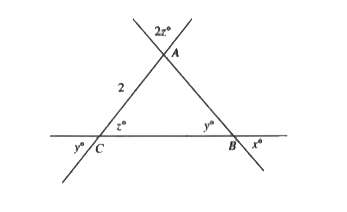What is the perimeter of each of the following figures? What do you infer from the answers?
To find the perimeter of each of the given figures, we will calculate the perimeter step by step for each shape.
Step 1: Calculate the perimeter of the square
1. Identify the sides of the square: Each side of the square is 25 cm.
2. Use the formula for the perimeter of a square:
Perimeter=4×side
3. Substitute the value:
Perimeter=4×25=100 cm
Step 2: Calculate the perimeter of the first rectangle
1. Identify the lengths of the sides: The lengths are 30 cm and 20 cm.
2. Use the formula for the perimeter of a rectangle:
Perimeter=2×(Length+Breadth)
3. Substitute the values:
Perimeter=2×(30+20)=2×50=100 cm
Step 3: Calculate the perimeter of the second rectangle
1. Identify the lengths of the sides: The lengths are 40 cm and 10 cm.
2. Use the formula for the perimeter of a rectangle:
Perimeter=2×(Length+Breadth)
3. Substitute the values:
Perimeter=2×(40+10)=2×50=100 cm
Step 4: Calculate the perimeter of the triangle
1. Identify the lengths of the sides: The sides are 30 cm, 30 cm, and 40 cm.
2. Use the formula for the perimeter of a triangle:
Perimeter=side1+side2+side3
3. Substitute the values:
Perimeter=30+30+40=100 cm
Conclusion
- The perimeter of the square is 100 cm.
- The perimeter of the first rectangle is 100 cm.
- The perimeter of the second rectangle is 100 cm.
- The perimeter of the triangle is 100 cm.
Inference
From the calculations, we can infer that despite the different shapes (square, rectangles, triangle), the total perimeter of each figure is the same, which is 100 cm.
1. Identify the sides of the square: Each side of the square is 25 cm.
2. Use the formula for the perimeter of a square:
Perimeter=4×side
3. Substitute the value:
Perimeter=4×25=100 cm
1. Identify the lengths of the sides: The lengths are 30 cm and 20 cm.
2. Use the formula for the perimeter of a rectangle:
Perimeter=2×(Length+Breadth)
3. Substitute the values:
Perimeter=2×(30+20)=2×50=100 cm
1. Identify the lengths of the sides: The lengths are 40 cm and 10 cm.
2. Use the formula for the perimeter of a rectangle:
Perimeter=2×(Length+Breadth)
3. Substitute the values:
Perimeter=2×(40+10)=2×50=100 cm
1. Identify the lengths of the sides: The sides are 30 cm, 30 cm, and 40 cm.
2. Use the formula for the perimeter of a triangle:
Perimeter=side1+side2+side3
3. Substitute the values:
Perimeter=30+30+40=100 cm
- The perimeter of the square is 100 cm.
- The perimeter of the first rectangle is 100 cm.
- The perimeter of the second rectangle is 100 cm.
- The perimeter of the triangle is 100 cm.
From the calculations, we can infer that despite the different shapes (square, rectangles, triangle), the total perimeter of each figure is the same, which is 100 cm.
Topper's Solved these Questions
- MENSURATIONBOOK - NCERT ENGLISHCHAPTER - MENSURATIONEXERCISE - SOLVED EXAMPLES
17 Videos
- MENSURATIONBOOK - NCERT ENGLISHCHAPTER - MENSURATIONEXERCISE - EXERCISE 10.2
1 Videos
- MENSURATIONBOOK - NCERT ENGLISHCHAPTER - MENSURATIONEXERCISE - EXERCISE 10.2
1 Videos
- KNOWING OUR NUMBERSBOOK - NCERT ENGLISHCHAPTER - KNOWING OUR NUMBERSEXERCISE - EXERCISE 1.3
3 Videos
- PLAYING WITH NUMBERSBOOK - NCERT ENGLISHCHAPTER - PLAYING WITH NUMBERSEXERCISE - EXERCISE 3.1
4 Videos
Similar Questions
Knowledge Check
What is the perimeter of ΔABC shown in the figure?
 A2+4√2B4+2√2C8D4+4√2
A2+4√2B4+2√2C8D4+4√2What fraction of each of the following figures is shaded part?
 A(i) 12 (ii) 13 (iii) 712B(i) 12 (ii) 23 (iii) 512C(i) 23 (ii) 14 (iii) 512D(i) 12 (ii) 25 (iii) 813
A(i) 12 (ii) 13 (iii) 712B(i) 12 (ii) 23 (iii) 512C(i) 23 (ii) 14 (iii) 512D(i) 12 (ii) 25 (iii) 813
What is the perimeter of the following figures?
View SolutionFind the perimeter of each of the following shapes: Figure
View SolutionWhat fraction of each of the following figures is shaded part ?

View SolutionWhat do you eat in Coconut
View SolutionWhat do the following figures represent?

View SolutionFind the perimeter of each of the following figures:
(i) Figure (ii) Figure (iii) Figure
View Solution
